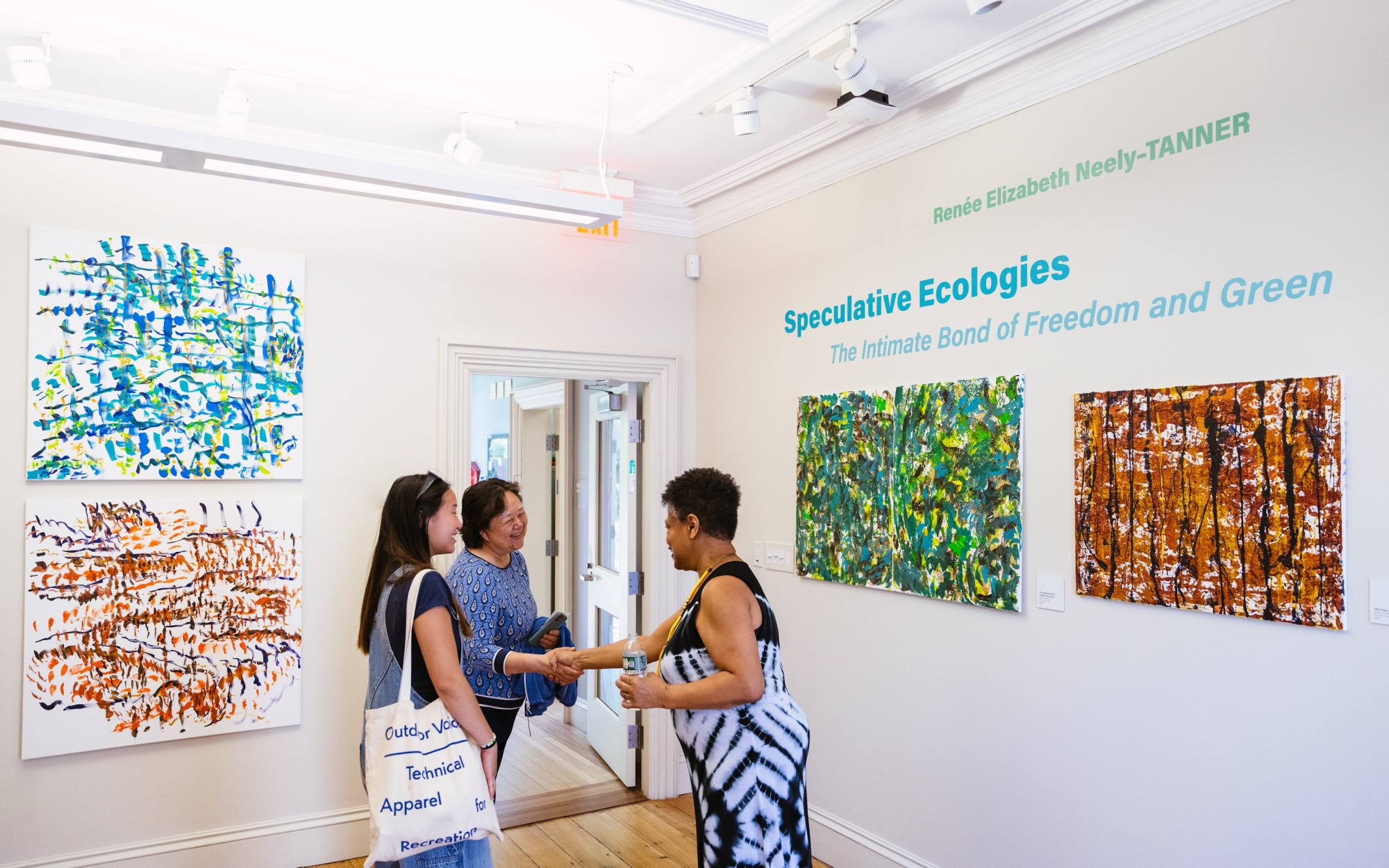Nina Simone said “Freedom is a feeling....”
I am always thinking about what freedom looks and feels like: spiritually, emotionally, physically, metaphorically, spatially. My work explores questions that move from personal to collective memories of time, space and place. The answers (though entirely unpredictable) work themselves out on canvas. I love the beauty of unpredictability.

“In Speculative Ecologies The Intimate Bond of Freedom and Green”, I create a landscape of spiritual and physical freedom through the lens of history. This body of work is grounded in my research of the historic Maroon communities of the Dismal Swamp on the borders between Virginia and North Carolina. This vast ecosystem of black water, cyprus, and juniper stretched outwards and touched the communities on its perimeters. After the Civil War, the Maroon settlements disbanded and the freedom seekers integrated into the BlPOC communities on its borders where I grew up. This history is the cornerstone of Speculative Ecologies.… My goal is to evoke and share the intangible feeling of “quitting slavery” and the personal power of “coming loose” from whatever binds us. I spend a lot of time thinking about and choosing color. The color leads me. My art making combines a variety of non-traditional methods. I use carpenter tools, bamboo screens, sponges, large palette knives and brushes and hemp. Each painting is a series of layers, built up with acrylic paint and mediums. Again, this is all an intuitive experiment. I admit that it takes some courage to put it out there. Once that happens, whatever the outcome may be, I know when it’s done.
Each painting is its own narrative. I use a series of marks (that repeat throughout my work) to think about language, pictographs and mapping. These markings voice the silence of Maroons, Saints, Elders and others who are still with us. The Heimark Artist in Residency program has afforded me everything I advocate for all BIPOC artists: resources, time to experiment and develop, and most important – visibility.
